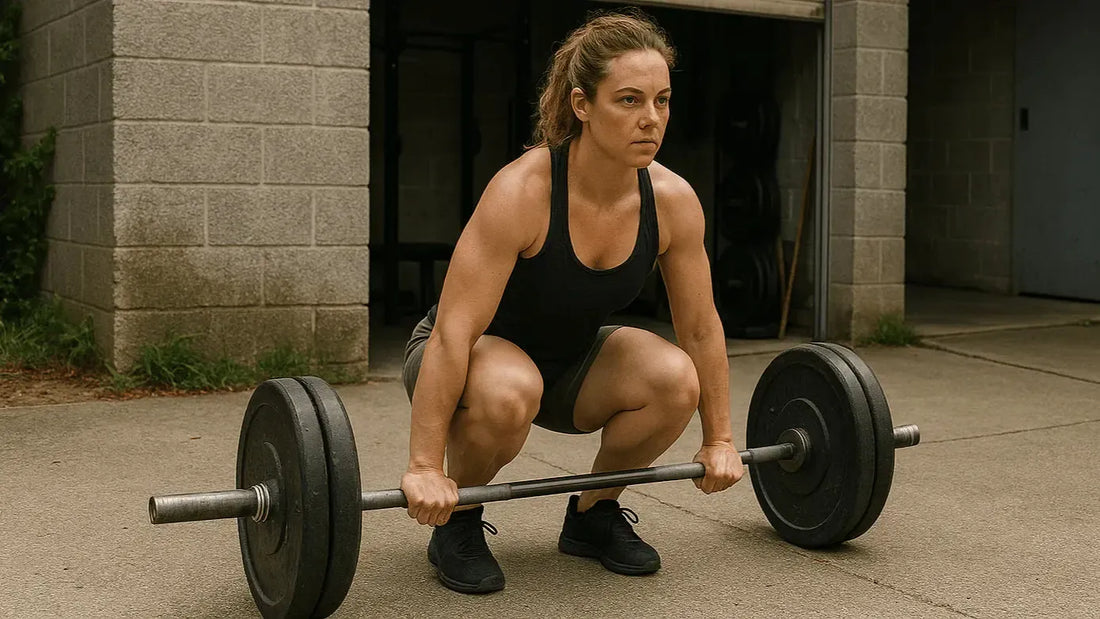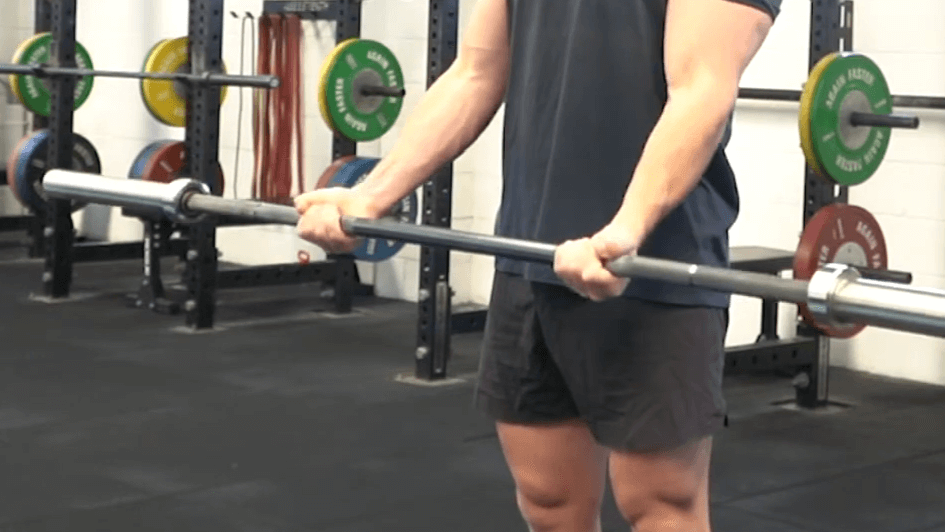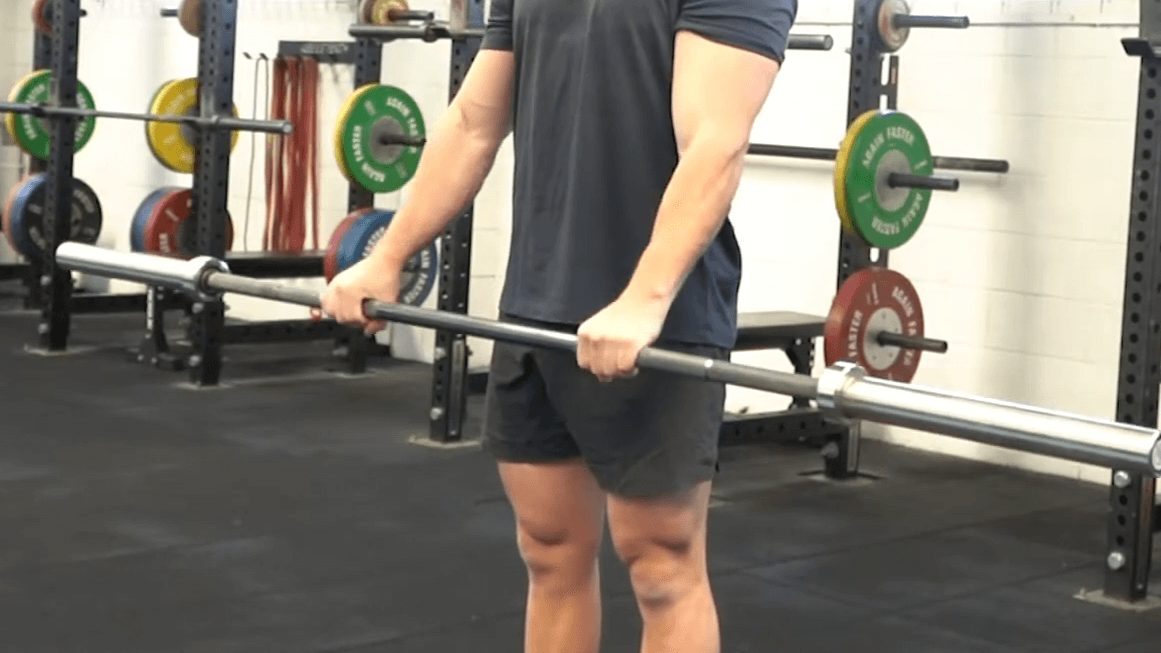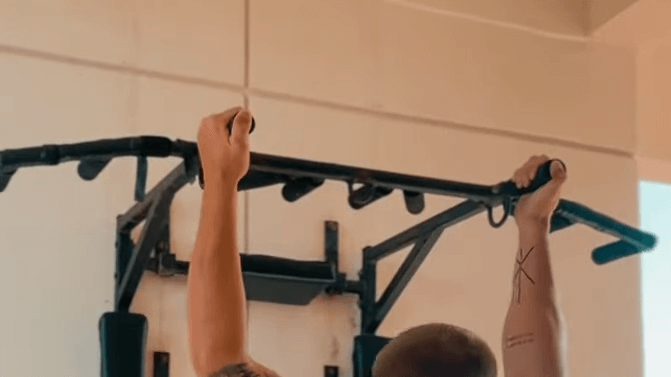
Get a Grip! - Pronated vs Supinated
Share
Table of Contents
- Grip type
- Why Grip Orientation Matters
- Pronated Grip vs Supinated Grip — What's the Difference?
- Supinated Grip (Underhand)
- Pronated Grip (Overhand)
- Neutral Grip
- Benefits of Different Grip Types
- Choosing the Right Grip for Your Workout
- Practical Examples: Adjusting Grip for Better Results
- Mixed Grip
- Drawbacks of Different Grip Types
- Grip Strength
- When to Change Your Grip
- "Success in the gym often comes down to the smallest adjustments."— Michael Geraghty
When it comes to lifting weights, most people focus on reps, sets, and rest times. But there's one factor that silently dictates your progress—and it's right at your fingertips. Literally.
Grip type
Understanding the difference between a Pronated vs Supinated Grip might just be the most overlooked key to unlocking new strength gains. Whether you're pulling, curling, or rowing, the way you hold the bar shifts the entire focus of the movement. And if you're not adjusting your grip? You're likely leaving strength on the table.
Let's break it all down.
Why Grip Orientation Matters
Small Change, Big Impact
When you grip a dumbbell or barbell, you're not just holding weight—you're determining how your muscles will fire. A neutral position, where the hands are neither supinated nor pronated, can offer a balanced approach to muscle activation and joint alignment. The orientation of your hands affects your joint alignment, range of motion, and most importantly, which muscles are doing the work.
One subtle shift in grip can redirect effort from your lats to your biceps, from your traps to your forearms. It's not just for pros or elite lifters—it applies to anyone serious about training smarter.
Pronated Grip vs Supinated Grip — What's the Difference?
Let's define the two primary players and throw in the often-overlooked third option.
Supinated Grip (Underhand)
Palms-Up, Biceps-Heavy
In a supinated grip, your palms face upwards, like you're cradling a bowl of soup. That visual helps, right?
This grip is your go-to for classic movements like bicep curls and chin-ups. It brings your elbows in close, creating a direct line of tension through the biceps brachii, brachialis, and forearms.
✅ Best for:
- Isolating the biceps
- Chin-ups
- Barbell and dumbbell curls
- Underhand barbell rows
⚠️ Watch out:
- It's not ideal for heavy compound pulling due to limited grip strength.

Pronated Grip (Overhand) Palms-Down, Back-Focused
The pronated grip is your default grip for most heavy lifts. It's strong, stable, and natural—think deadlifts, pull-ups, barbell rows, and presses.
When you grip overhand, you shift emphasis to the lats, rhomboids, traps, and rear delts. It also tends to align the shoulders in a more externally rotated, joint-safe position during heavy pressing and pulling.
✅ Best for:
- Deadlifts
- Pull-ups
- Overhead presses
- Barbell rows
⚠️ Watch out:
- May under-activate the biceps in pulling motions.

Neutral Grip
Palms Facing Each Other
A neutral grip sits right in the middle—palms facing each other, like you're clapping with a dumbbell in hand.
It's commonly used in hammer curls, neutral pull-ups, dumbbell bench presses, and cable rows. This position is joint-friendly and gives you a balance of biceps, brachialis, and forearm activation.
While supinated grips are excellent for isolating the biceps, neutral grips offer a more balanced approach, targeting the biceps, brachialis, and forearms.
✅ Best for:
- Hammer curls
- Neutral-grip pull-ups
- Cable and dumbbell rows

⚠️ Watch out:
- Not always possible with barbells—stick to dumbbells, cables, or specialised handles.
Benefits of Different Grip Types
Each grip type has its unique benefits, and understanding these can help you optimize your workout routine.
- Pronated Grip: Ideal for exercises targeting the back muscles, such as pull-ups and rows. This grip emphasises the lats, rhomboids, and traps, making it perfect for building a strong, wide back.
- Supinated Grip: Best for exercises focusing on the biceps and forearms, like bicep curls and hammer curls. This grip brings the biceps brachii and brachialis into play, providing a more intense arm workout.
- Neutral Grip: Offers a balanced approach, targeting the entire arm during exercises like neutral pull-ups and rows. This grip is joint-friendly and helps in evenly distributing the workload across the biceps, brachialis, and forearms.Using different grip types can help prevent plateaus and overuse injuries and ensure a well-rounded training program.
Choosing the Right Grip for Your Workout
The right grip for your workout depends on the exercise and your goals.
- Back Muscles: For back exercises, a pronated grip is often preferred. It engages the lats, rhomboids and traps, making it perfect for pull-ups and rows.
- Biceps and Forearms: If you want to focus on biceps and forearms, a supinated grip is the way to go. It's perfect for bicep curls and hammer curls, for a more concentrated arm workout.
- Entire Arm: For a balanced approach that targets the entire arm, a neutral grip is often the best. It's great for neutral pull-ups and rows, for a joint-friendly option that distributes the workload evenly.
Try different grip types and find the best grip for your workout to hit your fitness goals efficiently.
Practical Examples: Adjusting Grip for Better Results
Pull-Ups
- Pronated pull-ups = more back
- Supinated pull-ups (chin-ups) = more biceps
- Neutral pull-ups = balance between arm and back
Pro tip: If your pull-up progress has stalled, switch the grip. You'll stimulate different muscles and probably break through that plateau.
Bicep Curls
- Supinated curls = classic bicep isolation
- Pronated curls (reverse curls) = heavy forearm focus
- Neutral curls (hammer curls) = best for brachialis
Switch it up every few weeks. If you're not feeling a pump anymore, it's probably time for a grip change.
Rows
- Pronated barbell rows = targets lats and builds back width
- Supinated barbell rows = hits biceps and mid-back for thickness
- Neutral rows = great for accessory work and balance
If you're struggling with posture or rear delts, prioritise pronated rows. Want more biceps growth? Flip to supinated.
Mixed Grip
Also known as an alternating grip, is when you use a pronated grip with one hand and a supinated grip with the other.
This has several benefits:
- Balancing: A mixed grip can balance out the load across each side of the body.
- Grip Strength: This grip can increase overall grip strength, perfect for exercises that require a strong grip like deadlifts and rows.
- Variety and Plateaus: Adding a mixed grip to your routine adds variety and prevents plateaus, keeps your workouts fresh and challenging.
- Functional Strength: A mixed grip can also improve functional strength and coordination, translates to better performance in daily life.
Using a mixed grip can add a new dimension to your training and get you better results and avoid stagnation.
Drawbacks of Different Grip Types
Each grip type has its benefits but also drawbacks. Knowing these can help you optimise your workout and avoid issues.
- Pronated Grip: This grip can put too much stress on the wrists and forearms if overused. Balance it with other grips to avoid overuse injuries.
- Supinated Grip: While great for biceps, a supinated grip can put too much stress on the biceps and forearms if overused. Don't rely solely on this grip to avoid muscle imbalances.
- Neutral Grip: Although joint-friendly, a neutral grip can be less effective for exercises that target specific muscle groups like back muscles or biceps. Use it as part of a varied routine.
Using the wrong grip can lead to poor form and injury. Always use the right grip for the exercise and your goals.
Grip Strength
Grip strength is important for many exercises like pull-ups, rows and deadlifts. Here's how to optimize it:
- Proper Technique: Make sure you're using the correct grip technique for each exercise. This not only improves performance but also reduces the risk of injury.
- Consistency: Regularly include grip specific exercises like grip curls and wrist extensions to improve overall grip strength.
- Variety of Grips: Use a variety of grip types, pronated, supinated and neutral grips to develop well-rounded grip strength.* Progressive Overload: Increase weight and intensity to challenge your grip and grow.
- Warm-Up and Cool-Down: Proper warm-up and cool-down including grip specific exercises to prevent injuries and improve grip strength.
By focusing on these you can improve your grip strength and performance in your workouts and daily life.
When to Change Your Grip
- Every 4–6 weeks: switch your grip if progress stalls
- When balancing: use neutral to balance arm
- If joint pain: use neutral grip to reduce wrist and shoulder stress
- For heavier lifts: try mixed grip or hook grip for stability
Final Word from Michael Geraghty
The debate around Pronated Grip vs Supinated Grip isn't about which is better—it's about when to use each one.
Both have their place. The supinated grip builds arms. The pronated grip builds backs. And the neutral grip builds balance.
Use them wisely. Rotate them often. Build strength smarter. Your body will thank you.
